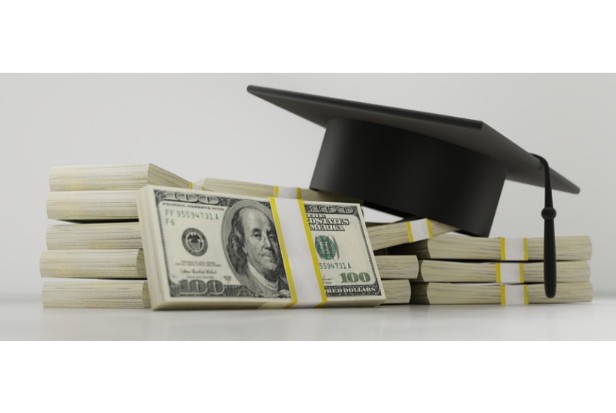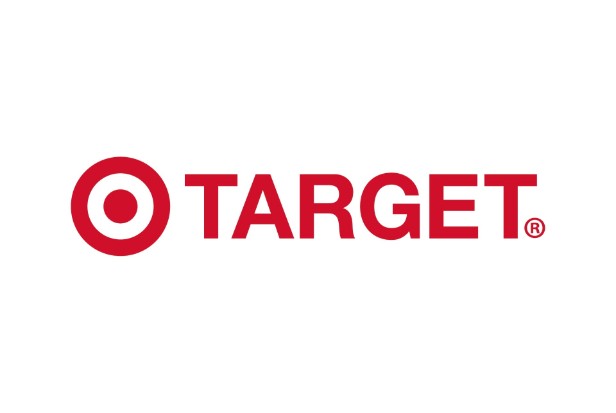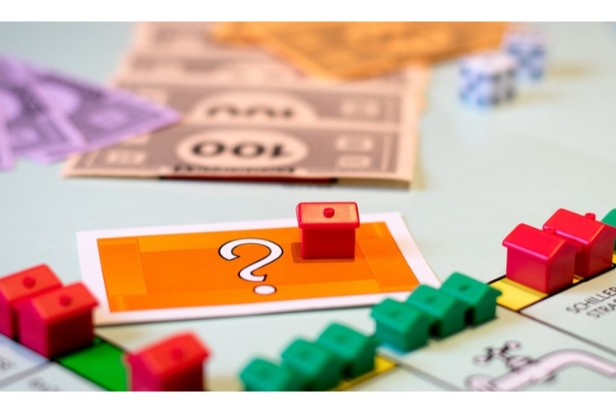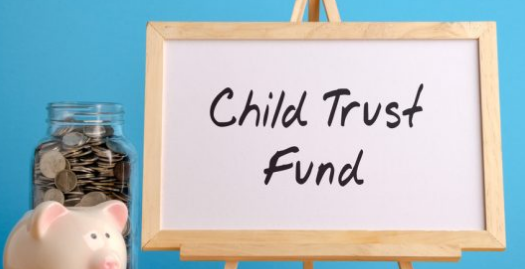
In general, you anticipate that as you make payments over time, your loan balance will decrease. Unfortunately, loan amounts can also increase even if you make payments.
Five years after they start making loan payments, nearly half of student loan borrowers are still in debt, according to research by Moody’s.
In this article, we’ll look at what causes your total loan balance to rise, what interest capitalization is, and how to avoid it. Who wants to spend the rest of their lives making loan payments, whether they are for a student loan or any other type of loan?
Table of Contents
What is Capitalization?
Capitalization is the process of raising money for a business using debt or equity. There are numerous types of term and it can mean different things. In our situation, capitalization entails adding the principal to the accrued but unpaid interest.
Therefore, if you are unable to make your loan payments for a predetermined amount of time, change to a different repayment strategy or obtain a direct consolidation loan. The principal balance will increase due to the interest that was accumulated during the deferment or unpaid payment period. As a result, when the principal grows, so does the interest that will be earned.
What is Interest?
Interest is the percentage charged by lenders on loans made to people, businesses, or organizations. For investors, it refers to the earnings you receive for your bank savings.
In accordance with the rules set forth by the Federal Reserve, various financial institutions may charge various rates of interest on student loans, personal loans, and other types of loans.
There are various types of interest, and each type has a different effect on the total loan balances you will need to pay off at the end of your repayment period. These include:
- Fixed Interest – this is the easiest to understand since it is simple and straightforward. It is the sum of money you will also have to pay back the loan. From the time you accept the loan until the loan is paid back, the fixed interest rate does not change. Fixed interest loans are typically short-term loans from individuals or loan brokers, or “shylocks.”
- Variable Interest – this comes with variable interest rates. In this scenario, the borrower pays interest determined by the market value established by the bank or other lending institution. Except for Perkins Loans, the majority of loans with initial disbursements prior to July 1, 2006, have variable interest rates.
- When banks or other lending institutions offer their preferred clients a loan, they charge them a specific rate of interest known as the prime rate. Compared to some other types of interest, this type is typically lower.
- Annual Percentage Rate (APR) – this is the type of interest that credit card companies mainly use, and it refers to the total amount of interest calculated annually based on the total cost of your loan.
Banks use a straightforward equation to add the prime rate and the margin the lender charges to determine the annual percentage rate.
- Simple Interest – It goes by the name regular interest as well. It is the rate that the banks or lenders charge for the loan throughout the entire loan term. The lender determines the interest, for instance, by multiplying the principal by the rate and dividing the result by the time period, in this case, three years if the simple interest is 5%.
- Compound Interest – With compound interest, the principal and interest both grow over time because the accrued interest is subtracted from the principal before calculating the new interest for the subsequent repayment.
These are merely the standard interest rate structures used by lenders worldwide. Of course, different ones, like prime and discount rates, might also be employed depending on the lender’s preferences.
What Makes Loan Balances Go Up?
Most of the time, loan issuers will design your repayments so that the size of the outstanding balance will gradually decrease. Progress will initially be slow due to capitalized interest.
But the balance will decrease along with the loan’s overall value. You will eventually make only a small amount in interest payments and repay the loan in full.
By definition, interest capitalization entails increasing both the principal (the amount you originally borrowed) and the interest you’ll have to pay in the future by adding the amount of unpaid interest to the principal.
The loan term determines how quickly you must repay. Federal student loans, for instance, have a standard repayment period of 10 years, whereas private student loans have a standard repayment period that ranges from five to fifteen years.
But a number of variables, some of which you might not ordinarily think about, could halt your loan repayment progress. Let’s talk about the factors that drive up your overall loan balance now.
Paying Less Than the Requested Amount
Even if you are investing money into your loan, it may still appreciate if you pay back less of it than was requested.
What impact does interest capitalization have on loans? The amount still owed grows exponentially as a result.
Let’s say you have a $40,000 student loan with a 5% interest rate. Twenty years are allotted for the loan. You can lower the principal to $39,000 if you repay $1,000 at the end of the first year.
The lender will however add $2,000 in interest, bringing the total loan amount after the $1,000 repayment to $41,000.
You must pay back your student loans on time each month in order to reduce your debt. This payment must include both the principal balance and the capitalized interest.
For the aforementioned example, that would entail spending more than $3,000 annually.
Delays in Paying the Loan Back
Typically, you don’t start making payments on a loan right away. Depending on the loan’s goal, there is instead a delay.
For example, the majority of students do not pay back loans while they are enrolled in school. As a result, while they are in school, their loans increase due to the capitalization of interest.
For instance, when compounded annually, a $40,000 loan with an interest rate of 5% per year will increase to $48,620 over the course of four years.
Your loan balance will most likely be much higher than it was during your freshman year when it comes time for your final exams.
Missing Or Deferring Payments
A loan will be capitalized, or increase in value, if you take advantage of forbearance (where you temporarily stop making payments) or payment deferral, just like if you pay less than the requested amount.
At the conclusion of their studies, lenders typically give students a six-month grace period before requiring loan repayments. They have enough time during this period to look for employment, begin making money, and cover some of their initial expenses.
But even during the grace period, interest on the loan keeps building up.
Income-Driven Payments
Federal income-driven repayment plans ask borrowers to pay what they can afford based on their monthly salary rather than amounts that will actually pay off their student debt.
Due to the fact that loan repayment amounts are occasionally lower than interest rates, balances gradually increase over time.
Choosing An Extended Payment Plan
Loans with extended payment plans typically take 20 years or longer to pay off completely. Usually, but much more slowly, these reduce the loan’s size over time.
Longer repayment terms result in much higher interest payments to lenders. In exchange, the monthly payments are lower, which increases your current disposable income.
Once more, your total loan balance could increase if you default on a payment schedule that is extended. Because payments typically only cover interest plus a small amount extra during the first few years, this is the case.
You may find yourself back where you were when you first started if you miss just one payment a year.
Errors
Finally, calculation errors may result in balances or loan capitalization rising. Question it if you notice that your balance suddenly rises even though you’ve been making all the right payments.
Numerous factors, such as incorrect payment amounts, algorithmic mistakes, or confusion between your account and someone else’s, can cause issues.
How to Lower Your Loan Balance
To lower your outstanding loan balance, you need to:
Make Extra Repayments
You are not required to follow the lender’s recommended repayment schedule. There is always the option to make additional payments. The principal should be paid off as soon as possible.
You must pay any fees associated with the administration of your account first when making additional payments. (These are typically very low). After that, you settle the interest and then the principal.
Long-term savings can be achieved by making even small increases in monthly loan repayments.
Find a Lower Interest Rate
The principal is rarely the issue when it comes to loan repayment. Financial hardship is actually brought on by interest capitalization.
It is difficult to repay loans when students are charged 5%-7% per year, especially in the beginning of their careers when they are making the least money.
Comparing interest rates across the market can be very beneficial. To make loans much more manageable, many lenders provide interest rates to domestic students that are less than 3%.
For instance, on $40,000 at 3%, you’d “only” have to repay $1,200 per year to keep the balance constant. If you pay more, the principal will be reduced, which will lower your future payments.
Become a REPAYE Plan Member
Become a member of the REPAYE plan if you are enrolled in a federal income-driven program and your monthly payments are less than the loan’s interest rate.
This reduces the amount of capitalized interest that must be paid each month by 50%, making your loan easier to manage. For instance, if the interest on your balance is $100 per month, this facility will reduce it to $50.
Get a Temporary Interest Rate Reduction
Although private lenders may provide additional relief for some borrowers, public lenders frequently offer the lowest rates on student loans.
Many companies provide rate reduction plans that let you temporarily lower the interest rate on your loan, enabling you to pay off more of the principal.
Pay Back Your Most Expensive Loans First
Always choose the most expensive loan to repay first when making a loan repayment. In most cases, unless you have a credit card or personal loan debt, that will likely be your student loan.
Repaying your student loans as soon as you can is a priority for your financial security because you cannot get rid of them, not even through bankruptcy. In some situations, it might be wise to pay off your student loans before any other loans.
How to Avoid Paying Capitalized Interest
What takes place if the interest on your loan is capitalized? In general, it implies that you have to make larger repayments, sometimes to the point where they become unmanageable.
There are two things you need to do to avoid capitalized interest from accruing on your loan:
- Pay off interest before the lender adds it to your balance.
- Starting your loan repayment while you’re still in school is advised, if possible.
During the grace period, you must make larger monthly payments in order to pay off interest before the lender adds it to your balance.
You can counteract any additional interest you might accrue by raising your repayment amounts.
Also, think about making early repayments to avoid accruing loan interest while you’re still in school. You can finance this out of savings or by taking on a part-time job while you’re in school.
You can end up saving a lot of money over the course of the loan if you figure out early on what contributes to your total loan balance.
How Does Student Loan Interest Work?

There are terms and conditions attached to each loan. Additionally, there are conditions attached to student loans that must be followed when it comes time to make repayments. Understanding your loan is crucial while you are a student so that you are in charge of paying off the outstanding balance when you graduate.
Both federal student loans and private student loans have interest that must be paid back after graduation. Borrowers of federal student loans can choose between subsidized and unsubsidized loans. In the case of a subsidized loan, the applicant student reaps the benefits while the unsubsidized loan benefits the other students.
The federal government is responsible for covering all of the interest on the subsidized loan while you are still in school. Once you graduate, however, the government stops covering your student loan payments, and you are solely responsible for making them.
Since 2010, graduate and professional students are regrettably no longer qualified for subsidized loans.
When you take out an unsubsidized loan, interest on your federal student loan begins to accrue as soon as you do. The government doesn’t pay anything for unsubsidized loans, so when you graduate, you’ll be responsible for paying the entire interest amount.
How to Reduce How Much Interest You Pay on Student Loans
Everyone would naturally prefer to pay low-interest rates on student loans or any other kind of loan. There are strategies you can employ to lower the amount of interest you will pay on your student loans.
Some of these methods include the following:
Refinancing
Refinancing your loan is one way to reduce the interest you pay on your student debt. You’ll need to locate an interest rate that you can qualify for in order to lower the principal and interest portion of your monthly payment. Look around and apply for refinancing loans.
Ask about interest rates, costs, and lender requirements for all available loans by getting in touch with several lenders. In other words, you will pay less interest on the balance due than you otherwise would on your federal student loan.
You might need a cosigner to help you secure more advantageous terms to put you in stable financial health because interest rates are typically based on deciding factors like your credit mix. Refinancing federal loans should be done with caution because you will lose out on thousands of dollars’ worth of federal benefits, such as interest subsides.
Automate Your Payments
Automating your regular payments is another way to cut down on the interest you pay on your student loans. By registering for autopay, you can do this. When you enroll in autopay, which automates your monthly loan payments, you can take advantage of the 0.25% interest discount that private lenders and federal loans always offer.
Seek Other Discounts
You might also be eligible for loyalty discounts from your bank or credit union and M-Power financing when using autopay from your student loan servicers. You must fulfill some requirements in order to be eligible for any of these discounts, which will ensure you a small interest rate discount that will help you lower the interest on your loan.
Negotiate
Negotiate with your lender to lower the interest rate on your loan as an additional option. For a private student loan, where you can haggle with your lender over the interest rate and flexible repayment schedule, this is possible. If you negotiate, you might be able to get a lower interest rate than you would have if you didn’t.
Final Thoughts
Now that you have this knowledge, you can use it to pay off your loan on time each month to avoid having your balance rise to an amount that will attract a lot of interest. Your credit limit is determined by how quickly or on time you repay or complete your loan, which will have an impact on any subsequent loans you apply for.


